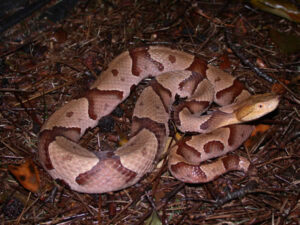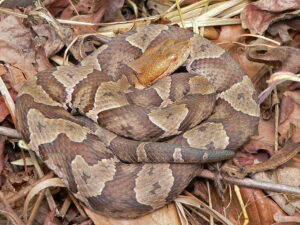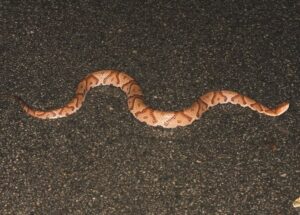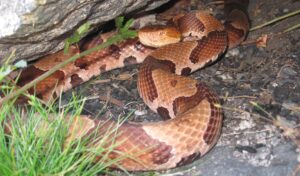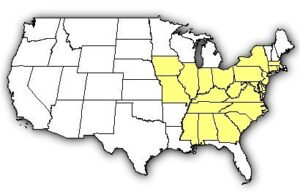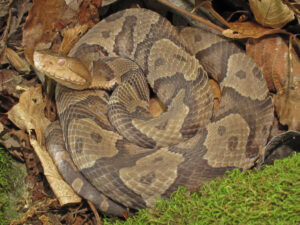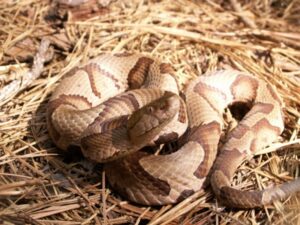Northern Copperhead (Agkistrodon contortrix mokasen)
Updated on
25/04/2024The northern copperhead, a venomous pit viper, is a native of the eastern U.S. This species, along with the Osage copperhead (Agkistrodon contortrix phaeogaster) and southern copperhead (Agkistrodon contortrix contortrix) was initially regarded as the copperhead’s subspecies. However, DNA-based studies conducted in 2008 and 2015 showed no genetic differences between the three subspecies. They were elevated to a single species, Agkistrodon contortrix, commonly called the copperhead. Of the numerous common names assigned to this species, a few include highland moccasin, beech-leaf snake, dead adder, and harlequin snake.
Scientific Classifications
- Suborder:Serpentes
- Family:Viperidae
- Genus:Agkistrodon
- Species:A. c. mokasen
Conservation Status
Description
Size
They grow to a length of 24 to 36 inches, with a recorded length of 53 inches.
Color and Appearance
They have beautiful colors and patterns, a combination of brown, copper, and tan that gives these snakes a perfect camouflage against the litter of leaves, making it difficult for predators to spot them. They have an hourglass pattern on their body, a coppery-red head, reddish-brown body marked with deep chestnut crossbands that appear narrow towards the center and widen to the sides. There are also dark rounded spots on both sides of their belly.
Juveniles are of a lighter coloration, with a grayish body. They even have a tinge of yellow at the tip of their tail, which fades and is entirely gone by the time they are 3-4 years old. Their eyes also have a dark line demarcating the darker coloration of their head and the lighter shade of their labial scales.
Northern Copperhead At a Glance
Distribution
They have a wide range in the United States found in Maryland, Washington D.C., East Texas, Virginia, Southern Indiana, Southern Illinois, North Alabama, the whole of Mississippi, North Georgia, the Hudson Valley region of New York, the Appalachian Mountain area, and southwestern Pennsylvania.
Habitat
They mainly inhabit rocky and wooded terrain of hilly and mountainous regions. One could even spot these snakes near moist habitats like streams, swamps, and marshes.
Lifespan
The northern copperhead lives for 18 years on average.
Predators
They are preyed upon by raccoons, opossums, and birds of prey like hawks and owls.
Diet
Their diet includes mice, rats, small snakes, lizards, birds, toads, frogs, and small rodents.
Reproduction
Their mating period lasts from late spring to early fall. The males mostly fight to acquire their rights to mate with a prospective female, with the strongest and biggest male winning. They are viviparous, giving birth to3-14 live young on average. The hatchlings are around 8 inches at birth. The newborns go on their own right after being born.
Source
srelherp.uga.edu, pinglelist.org, i.pinimg.com, bostonglobe.com, venombyte.com, staticflickr.com,

